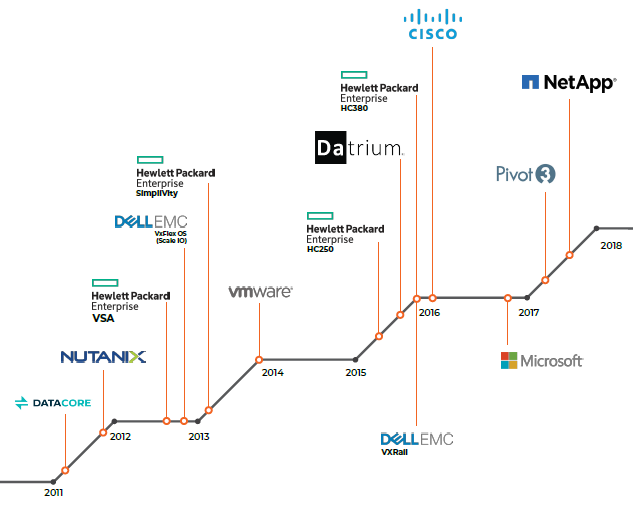What is Software Defined Storage and Hyperconverged Infrastructure? SDS and HCI definitions explained.
Already up-to-date? Compare SDS and HCI vendors and products at our SDS and HCI comparison page or Whatmatrix SDS and HCI landscape report 2018.
SDS: Definition of Software Defined Storage
The concept of ‘Software Defined Storage’, often abbreviated as SDS, has still not been standardized in spite of the SDS market being in existence for nearly two decades now. It has received increased attention in the last 6 to 7 years, reflecting the growing need of organizations to address rising storage-related challenges. Within the same timespan Hyperconverged Infrastructure (HCI) – which builds upon the SDS foundation – also emerged. Today there are many SDS & HCI providers, each with different specializations and approaches to software defined storage. At the most fundamental level, every SDS solution follows three basic rules:
Rule #1: The software is designed to run on commodity server hardware and makes use of the available resources therein.
Rule #2: The solution aggregates physical storage capacity from separate systems into a single shared storage pool.
Rule #3: The solution offers a broad set of storage functionality (services) comparable to traditional hardware-based shared storage systems.
Although on occasion solutions bend the ruleset by having a proprietary component inside, they are still considered by many as members of the Software Defined Storage family. Beyond the basic functionality, SDS solutions provide a variety of advanced capabilities that depend on the vendor’s focus areas and intended use cases. However, almost every SDS solution has been developed with end-user simplicity in mind that traverses the entire operational lifecycle, from initial provisioning, gradual expansions and recurring maintenance, all whilst guaranteeing uptime and data availability. SDS thus enables end-users without in-depth storage know-how to leverage powerful storage capabilities to fulfill the changing needs of today’s digital business.
HCI: Definition of Hyperconverged Infrastructure
The concept of a ‘Hyperconverged Infrastructure’, often abbreviated as HCI, has been around for more than 5 years now. When HCI became the new industry buzz-word, HCI was often used as a synonym for SDS, which started to blur the lines. Fundamentally, HCI is best described as one of the methods to acquire Software Defined Storage (SDS) solutions. Whereas pure SDS has a software-only approach in the sense that the storage software can be leveraged with any serverand storage hardware that meets the minimum requirements, and thus providing maximum flexibility, HCI pre-packages the SDS software and the commodity server hardware needed to build the SDS solution into a single offering. This way end-users can choose from pre-defined optimized building blocks that are prepped before shipping so they are ready-to-go once they arrive at the organization’s doorstep. HCI expands on the notion of simplicity by having a turnkey delivery approach as well as providing close-to-zero administration benefits. In essence, HCI attempts to match the speed of today’s digital business.
SDS and HCI Focus Areas
The SDS & HCI evaluation assesses solution capabilities in seven areas. These areas reflect typical IT challenges that organizations concentrate on when considering SDS & HCI platforms. These include: • Design & Deploy. Aspects pertaining to designing, evaluating and deploying the storage solution • Workload Support. Capabilities that enable IT to leverage the storage solution against a set or all of the intended use-cases
- Server Support. Enablement of end-users to choose server hardware components that meet their organizational standards as well as short- and long-term compute requirements
- Storage Support. Enablement of end-users to choose a combination of storage hardware components that meet their performance and capacity requirements
- Data Availability. Features that provide protection against hardware failures, data corruption and entire site outages
- Data Services. Features that provide storage efficiency, performance optimization, data portability, file serving, as well as capabilities that ensure compliance and safeguard information
- Management. Single-pane-of-glass administration, performance monitoring, task automation, self-service options, support features, self-healing and predictive analysis capabilities
Vendor and products included as of 2019
Compare theses SDS and HCI vendors and products at our SDS and HCI comparison page.
- Cisco

- DataCore
- Datrium
- Dell EMC
- Hewlett Packard
- Enterprise
- Microsoft
- NetApp
- Nutanix
- Pivot3
- VMware
- HyperFlex
- SANsymphony
- DVX
- VxFlex OS
- VxRail
- SimpliVity
- StoreVirtual
- VSA Storage Spaces
- Direct HCI
- Enterprise Cloud Platform
- Acuity
- vSAN
Trends & Outlook
The overall observation of the last couple of years is that SDS/HCI platform functionality is getting both deeper and broader in scope. The ultimate aim is not only to rival the functionality provided by long establish traditional shared storage solutions, but to surpass them altogether. The years 2017 and 2018 are no exception. There were a lot of compelling new capabilities introduced for the very first time, as well as other capabilities being widely adopted by SDS/HCI vendors. At the same time, though, some capabilities are clearly (still) struggling to gain momentum, whereas some potential capabilities simply did not see the light of day.
All credits: Herman Rutten




